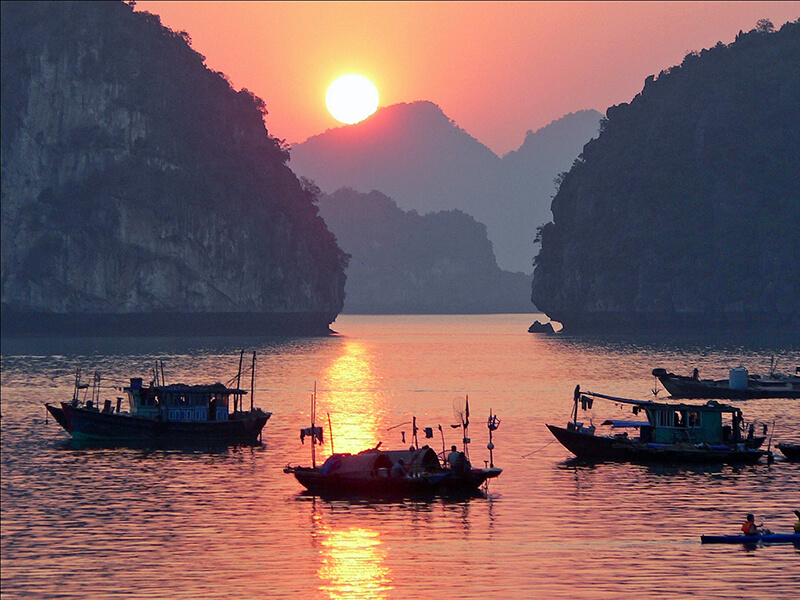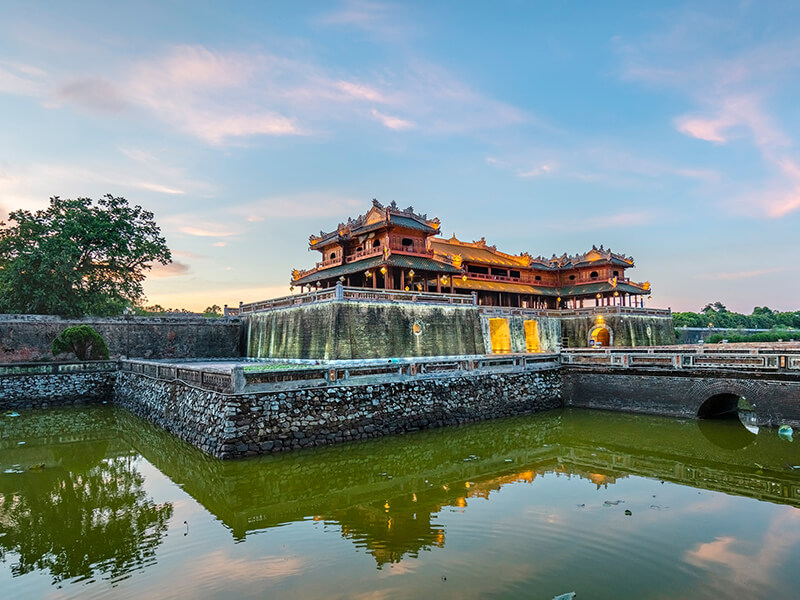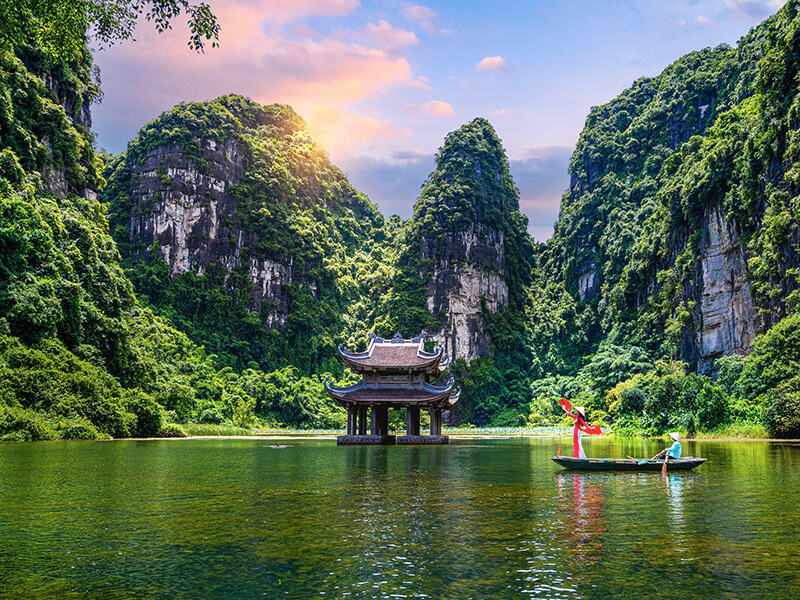TABLE OF CONTENT
- Halong Bay – A Natural Wonder
- Hue Imperial City – A Glimpse into Vietnam’s Royal Past
- Hoi An Ancient Town – A UNESCO Gem
- My Son Sanctuary – Champa Kingdom’s Legacy
- Phong Nha-Ke Bang National Park – Caves and Karst Landscapes
- Thang Long Imperial Citadel – Heart of Hanoi
- Trang An Landscape Complex – Nature and Spirituality
Vietnam, a country steeped in history and culture, boasts a mesmerizing array of heritage sites that stand as testaments to this country’s rich past. From ancient temples and pagodas to lush landscapes and historic cities, each site tells a unique story about Vietnam’s diverse heritage. Let’s embark on a journey through some of the most remarkable heritage sites that define Vietnam’s cultural identity.
Halong Bay – A Natural Wonder

Nestled in the Gulf of Tonkin, Halong Bay is a UNESCO World Heritage Site renowned for its emerald waters and thousands of towering limestone karsts. These stunning rock formations, topped with vibrant greenery, create a surreal landscape that has captured the imaginations of poets and travelers alike for centuries.
Hue Imperial City – A Glimpse into Vietnam’s Royal Past

The ancient city of Hue served as the imperial capital of Vietnam for 143 years and is home to the majestic Hue Imperial City. This sprawling complex houses the impressive Purple Forbidden City, where the Nguyen emperors once held court. The intricate architecture and serene gardens provide a glimpse into Vietnam’s royal history.
Hoi An Ancient Town – A UNESCO Gem

Hoi An, a charming town on the central coast, is a UNESCO World Heritage Site that transports visitors back in time. The well-preserved architecture, narrow winding streets, and lantern-lit evenings create an enchanting atmosphere. Hoi An’s cultural melting pot is reflected in its blend of Chinese, Japanese, and European influences.
My Son Sanctuary – Champa Kingdom’s Legacy
Deep in the heart of Quang Nam Province lies the My Son Sanctuary, a testament to the ancient Champa civilization. The cluster of Hindu temples and towers, dating back to the 4th to 14th centuries, showcases the remarkable architectural and artistic achievements of this once-great kingdom.
Phong Nha-Ke Bang National Park – Caves and Karst Landscapes

Recognized as a UNESCO World Heritage Site, Phong Nha-Ke Bang National Park is a treasure trove of karst landscapes, lush forests, and an extensive cave system. The park is home to the world’s largest cave, Son Doong, and the mesmerizing Phong Nha Cave, offering adventurers a chance to explore Vietnam’s natural wonders.
Thang Long Imperial Citadel – Heart of Hanoi
Situated in the heart of Hanoi, the Thang Long Imperial Citadel is a historical site that served as the political center for 13 centuries. The citadel showcases Vietnam’s resilience through wars and invasions, with well-preserved gates, walls, and ancient structures.
Trang An Landscape Complex – Nature and Spirituality

Trang An, another UNESCO World Heritage Site, is known for its breathtaking landscapes, limestone karsts, and intricate cave systems. The site also includes ancient temples, pagodas, and vibrant ecosystems, creating a harmonious blend of nature and spirituality.
Vietnam’s heritage sites are a treasure trove of history, culture, and natural beauty. Each site contributes to the vibrant tapestry of Vietnam’s identity, inviting visitors to explore the country’s past and appreciate the resilience of its people. Whether it’s the mystical Halong Bay or the ancient wonders of My Son, Vietnam’s heritage sites offer a captivating journey through time and tradition.



